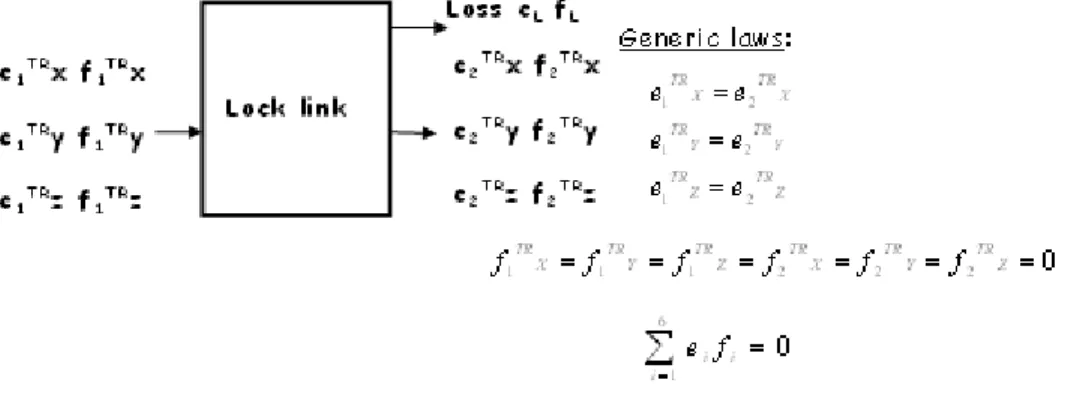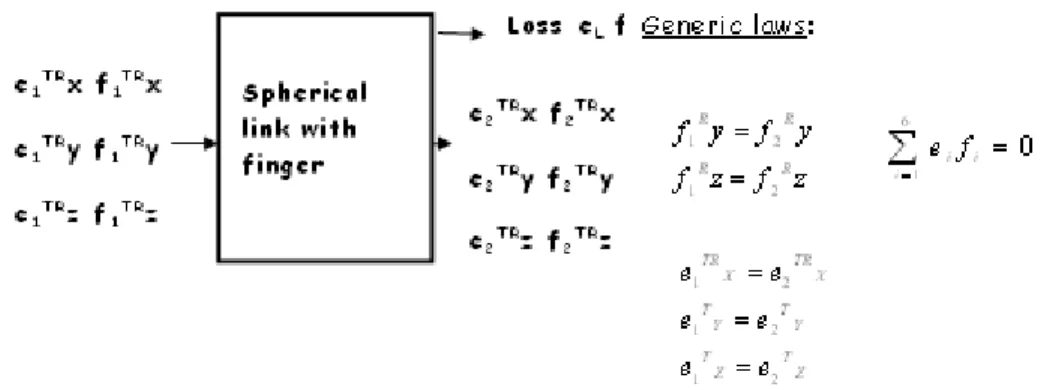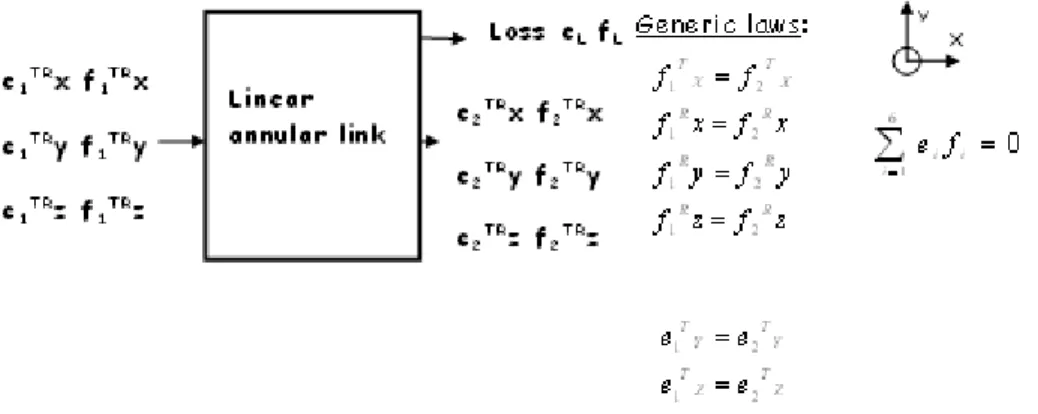The set of all classes of all classifications of the laws of nature is denoted by TP. The set of all classes of all classifications of laws is denoted by TL (this definition is based on Yoshikawa [Yoshikawa, 1981]).
B ACKGROUND
R ESEARCH PROBLEM
In this regard, if the goal of design science is, as stated by Yoshikawa [Yoshikawa, 1981] to clarify "the human ability to design in a scientific way and at the same time the production of practical knowledge about [...] the methodology of design". , then the classification can be considered as an initial step to achieve this goal. The practical selection of attributes that describe a function and the calculation based on these attributes of a metric.
A IM OF THE RESEARCH
R ESEARCH METHODS
The concept of function introduced in the thesis is then compared with the substance-field concepts of the TRIZ methodology [Altshuller, 1984] and the concepts of useful and harmful functions. The study of the function concept ends with the analysis of the transition between functions from the perspective of a sequential map structure.
S COPE OF THE RESEARCH
All these methodological analyzes will lead to the synthesis of a metamodel framework that combines the generic concepts, associates the concepts using laws and maps these concepts. The final part of the research methodology consists of developing a synthesis of the metamodel framework developed in this thesis.
A UTHOR ’ S CONTRIBUTION
The machinery also provides an analysis of the relationship that exists between functions that share properties (interfunction sharing). It becomes possible by following step by step the proposed classification scheme to flow progressively from the functional representation of the design problem to the synthesis of the concepts of solutions.
![Figure 2: The positioning of the contributions in the [Hubka and Eder, 1992] graph](https://thumb-eu.123doks.com/thumbv2/9pdfco/19346694.0/25.918.197.806.119.617/figure-2-positioning-contributions-hubka-eder-1992-graph.webp)
O UTLINE OF THE THESIS
This corresponds to my vision of design as a phase-based model in which conceptual design process goes through fundamental stages as the generation of the functional description, the synthesis of concepts of solutions, the ranking and comparison of the concepts of solution and the analysis of the adequacy between the concepts of solution and the functional description created during the first initiation phase. This part is followed by part 3.3 which provides an improved fundamental system of quantities and develops a mathematical framework aimed at obtaining a metric space and comparing concepts of solutions.
I NTRODUCTION
N ATURE OF THE DESIGN ACTIVITY
- General terminology
- Properties of design model and nature of the thinking in design
- Classification of existing methodologies and theories from a conceptual
- Conclusion
A physical lifecycle architecture defines the type of interaction between the phases of the lifecycle. Modern design is complex and also requires modeling of the economic and informational aspects related to the physical life cycle.
![Figure 4: The physical product life cycle model [Pré consultants, 1999]](https://thumb-eu.123doks.com/thumbv2/9pdfco/19346694.0/32.918.226.728.711.1002/figure-the-physical-product-cycle-model-pré-consultants.webp)
P RESENTATION OF THE GDT CONCEPTS AND CONSEQUENCES FOR THE THESIS
Introduction
This example is presented below and focuses only on the architecture of the moving vacuum cleaner module. The way in which designers gradually move from the functional description of the product to the solution of the product concept is described.
![Figure 7: Autonomous vacuum cleaner concepts of solutions based on Nicoud [Nicoud, 2003]](https://thumb-eu.123doks.com/thumbv2/9pdfco/19346694.0/47.918.278.621.204.831/figure-autonomous-vacuum-cleaner-concepts-solutions-nicoud-nicoud.webp)
Main GDT definitions and axioms in the ideal knowledge
In principle, the function space for the domain of robots can contain 213 functions (ie: the size of the power set of the set of robots). A = (has a spherical structure, has rotation and translation coupled, has one point of contact) is a deliberate description of the robot A.

Main GDT definitions and axioms in the real knowledge
These views strongly emphasize the physical aspects of the concept of function and its physical implementation in an entity. This theorem states that the topology of true knowledge is precise enough to allow the metric to be computed.

The central role of the classification in this thesis
This aspect of design activity has been extensively studied in the TRIZ methodology [Altshuller, 1984]. In the same way, due to economic constraints, the planner must consider the economic aspects of the physical design life cycle model.
Consequences of the Axiom of separation/recognition for the thesis
According to Reich [Reich, 1995], the assumption about the compactness of the actual knowledge can be relaxed. The goal is to obtain a structure of the classification space precise enough to ensure the property of separation.
General classification structure of the metamodel framework
The act of sensing in most cases involves converting a signal and/or increasing this signal according to the normal vocabulary defined by Hirtz [Hirtz et al., 2002]. Indication in most cases involves branch-transfer-transmission, and this can be done using distribution mechanisms. P is the entropy pump of the environment, its ability to recycle a certain amount of entropy corresponding to the environment in a steady state.
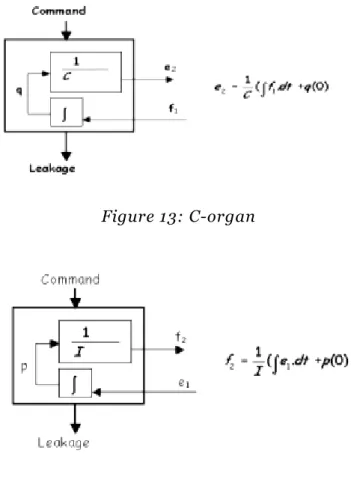
The three domains of design
The principle of conservation of the energy and its consequences: Presentation of
The second types of variables are the power variables P(t) which are formed by the effort e(t) and the current f(t). Rotation Rotation Torque Angular velocity Translational Translational force Linear velocity Pneumatic Pneumatic Pressure Mass flow Electromagnetic Radiation potential No. Signal Status Auditory Information Potential Information Flow Smell Information Potential Information Flow Tactile Information Potential Information Flow Taste Information Potential Information Flow Visual Information Potential Information Flow Control Analog Information Potential Information Flow Discrete Information Potential Information Flow Economic.
![Table 6: Classifications of domains and related names for power variables (adapted from Hirtz [Hirtz, 2002])](https://thumb-eu.123doks.com/thumbv2/9pdfco/19346694.0/79.918.156.848.180.1011/table-classifications-domains-related-variables-adapted-hirtz-hirtz.webp)
Presentation of the basic mechanisms used in the thesis
The mechanical junctions subgroups are mechanisms that combine the properties of the insert and flow junctions, as shown by the generic laws. It should be noted that the helical joint organ is a special case of the conversion mechanism T-organ. As in the case of the subset of mechanical nodes, we can imagine a generic computational mechanism that can be controlled and transformed alternatively in each of the three fundamental organs.
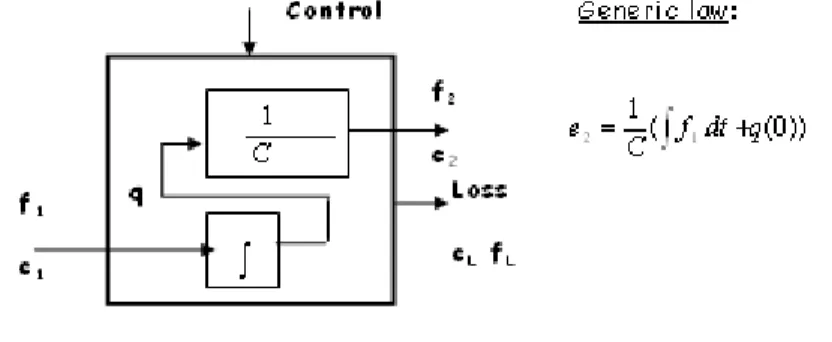
A NALYSIS OF THE CONCEPT OF FUNCTION USED IN THE THESIS
Introduction
Another type of feature is a constraint, which is "a restriction on the designer's freedom that is considered necessary for the investor". Dardy and Teixido also present another type of function, called a technical function, which is not directly related to the user's needs. The function definition is not clear enough, and the analysis needs to be accelerated to overcome this duality.
Function as an interface between two situations
It is then, according to the APTE method, a limitation, because an autonomous vacuum cleaner is not an interface between two situations in the environment. Situation: The state(s) of the elements in the environment within an amount of time and space. As a result, a situation exhibits several basic characteristics that can be represented according to the classification in Table 8.
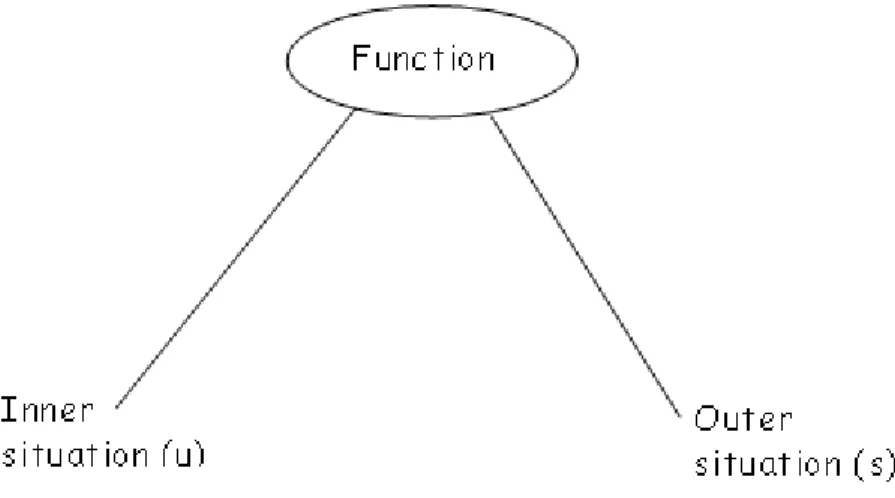
Standard vocabulary for functions and situations in the thesis
This vocabulary is important both for representing a function of an action verb and a situation by describing the nature of the substance involved in the situation. Nevertheless, this functional classification has been developed to correctly describe the needs of the designer when analyzing the use phase of the future product. The standard vocabulary for the situation developed in this section focuses on the nature of the substance that is part of the situation frame as summarized in Table 8.
![Table 10: Reconciled material taxonomy adapted from Hirtz [Hirtz et al., 2002]](https://thumb-eu.123doks.com/thumbv2/9pdfco/19346694.0/107.918.159.828.175.989/table-reconciled-material-taxonomy-adapted-hirtz-hirtz-2002.webp)
Similarities between the concept of function of this thesis, Su-Fields of TRIZ and
The definition of the concept of function used in this thesis states that a function (expressed in the form of an action verb) is an interface between two situations. The Su-field modeling has many similarities with the function concept introduced in this thesis. Su-field is closer to the physical implementation of a product than the functional concept.
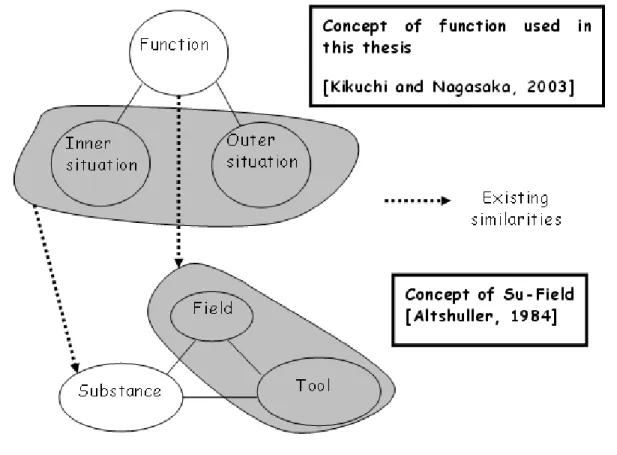
The different types of functions used in the thesis
According to this thesis, a superior function is seen as a certain type of technical function called a superior technical function in the classification of Table 12. In addition, the elementary contact functions are directly related to the nature of the connection found in the technical system. Harmful functions: Functions not intended for or desired by the technical system and which have undesirable results.
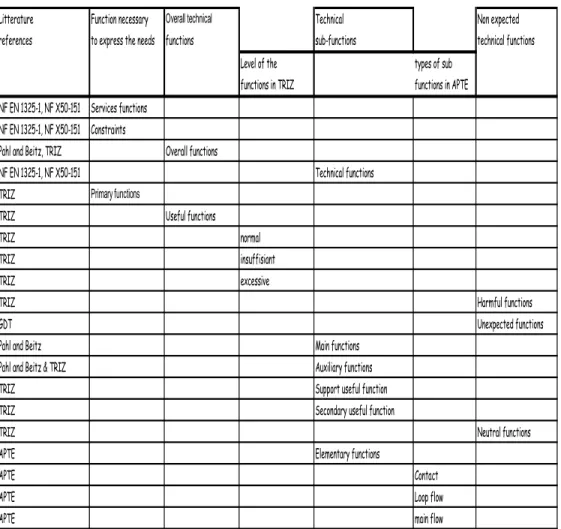
Analysis of the transition between functions
The action in our case is the interface function resulting from the function concept discussed above. A step represents the different states of a system in a more abstract way and is therefore a less precise representation of the concept of situation. Moreover, the concept of transition does not exist in the concept of function, and the GRAFCET tool is suitable for representing the transformation between different situations of a system.
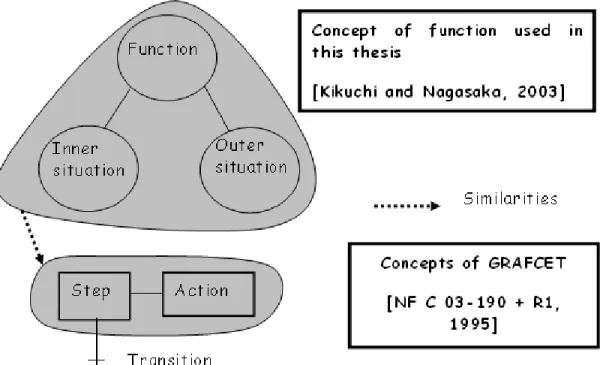
Example of analysis of transition between functions using GRAFCET
The initial situation is characterized by the initial steps that are by definition active at the beginning of the evolutionary process. Clearing a transition simultaneously results in the active state of the immediately following step(s) and the inactive state of the immediately preceding step(s). Furthermore, two types of divergences are used to represent different types of evolutions depending on the type of transition; the AND and OR divergence (see Figure 62 for the OR divergence).
S YNTHESIS OF THE METAMODEL STRUCTURE
This principle of energy conservation is valid in the physical, informational and economic fields. Clarification of tasks and elaboration of specifications, - Abstraction to identify essential problems. These two conditions form two of the three characteristics required of a classification space in order to be transformed into a metric space.
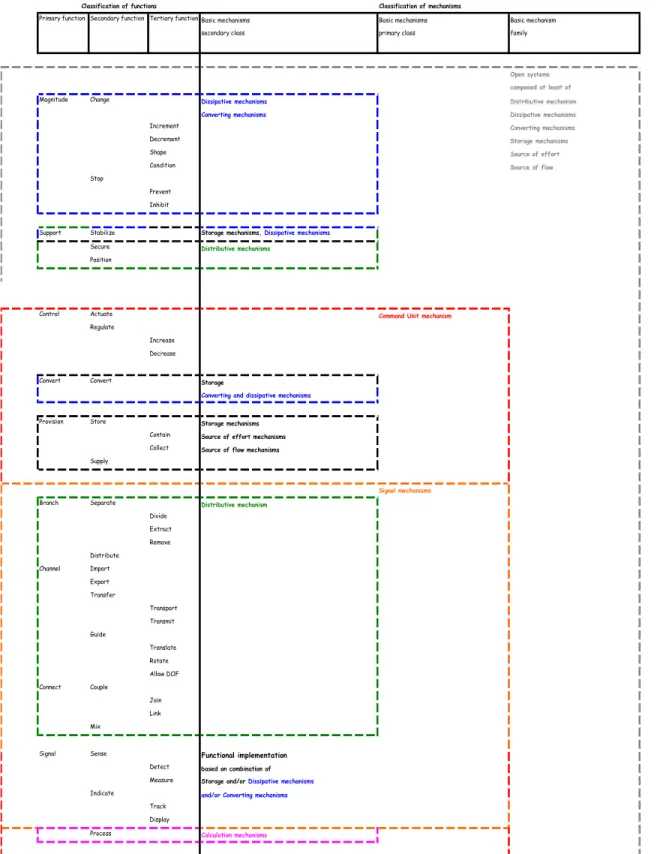
T HE CLARIFICATION / FORMULATION AND SYNTHESIS PROCESSES
Example of the clarification/formulation and synthesis of technical system (TS): a
It should be noted that the concept of function is still used in the field presentation of the thesis. The figure below shows a possible implementation of solution 2a using the SADT representation. Creating the SADT representation is also using the standard generic solutions set in 2.4.4.
![Figure 65: Interaction graph [SADT ® ] of the TS environment](https://thumb-eu.123doks.com/thumbv2/9pdfco/19346694.0/141.918.240.802.407.675/figure-65-interaction-graph-sadt-ts-environment.webp)
Example of synthesis of a Technological Process (TP)
The functional structure of the selected pressure regulator concept is shown in the following figures. The next step of the conceptual design process consists of drawing a schematic representation of the selected concept of print. The drawing of the selected piston and the necessary variables are shown in the following figure.
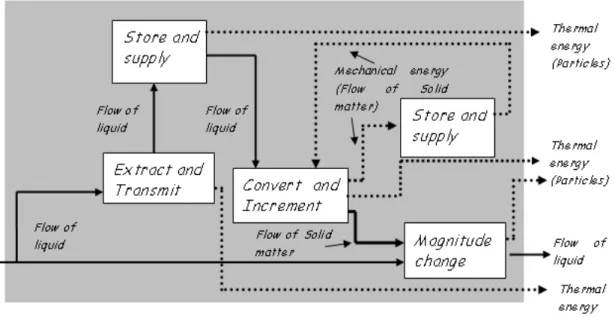
E VALUATION AND ADEQUACY ANALYSIS
Enhanced system of fundamental quantities required for the evaluation and
Initially, the amount of information transmitted during the communication process is clearly correlated with the complexity of the designed technical system. The amount of information related to the XY, XZ and YZ plan can be calculated. The entire content of macro geometrical information related to the piston is synthesized in the following table.
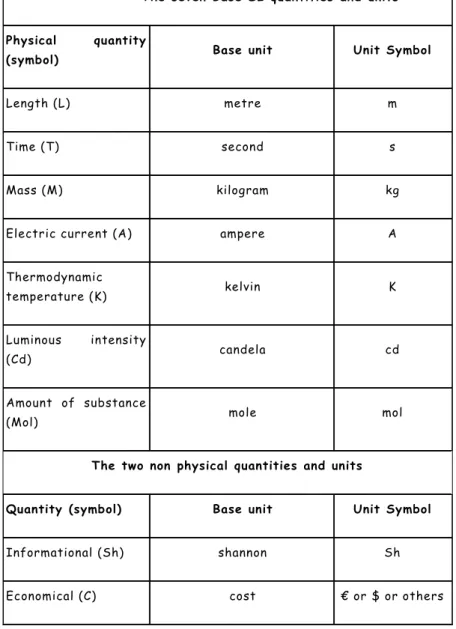
Mathematical machinery made for obtaining a metric space and method for
Machinery aimed at providing intra-inter-analysis of the dimensionless groups and inter-function analysis: [Bashkar and Nigam, 1990]. They must have a low cost related to each step of the physical life cycle (economic and information domain). For example in the case of the two concepts of solution of Figure 89 a and b, the function REVERSE displays different types of efforts and flows.
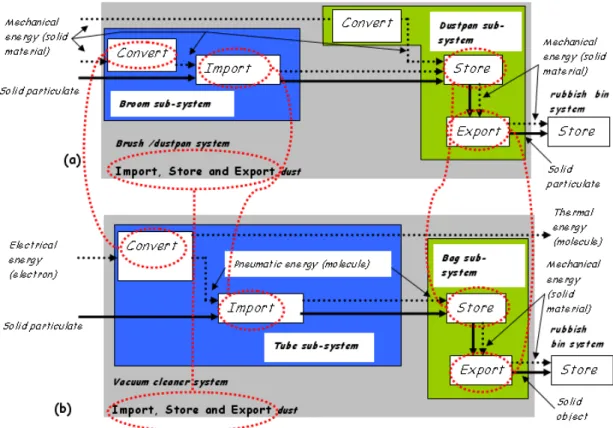
Example of the use of the machinery for simple concepts of beam
In the case of the beam, the concepts change during the beam shaping process. The third is related to the length combined with the shape of the beam. Π1 provides additional information that is not required for comparing solution concepts.

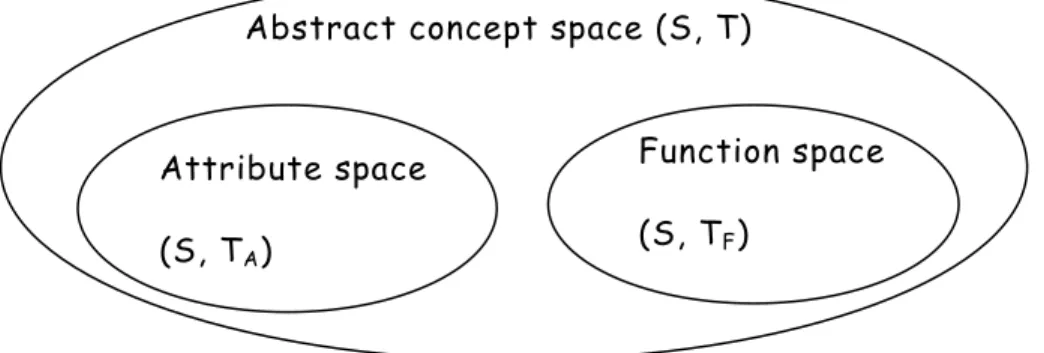
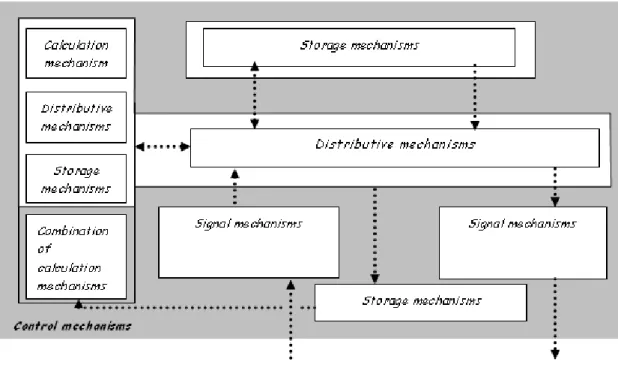
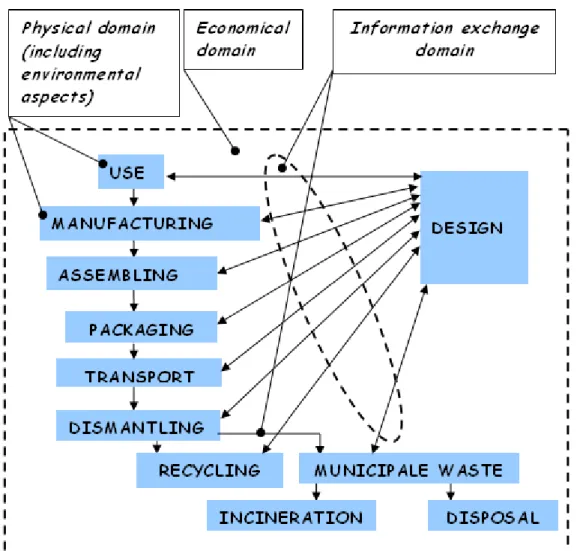
![Table 7: Classifications of domains and related names for state variables (adapted from Hirtz [Hirtz, 2002])](https://thumb-eu.123doks.com/thumbv2/9pdfco/19346694.0/80.918.179.843.173.990/table-classifications-domains-related-variables-adapted-hirtz-hirtz.webp)
